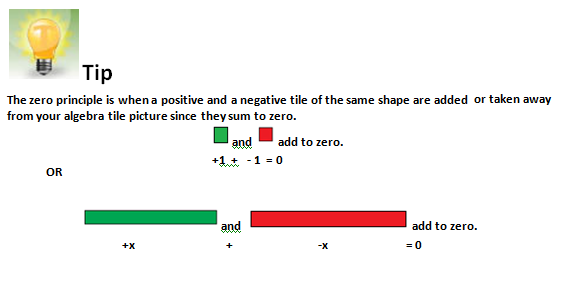Lesson 4: Factoring Trinomials of the Form ax^2 + bx + c
Module 3: Polynomials
Explore

© sonya etchison/shutterstock
The photograph shows a group of students entering a high school. Some might have taken the bus, or perhaps a family member drove some of the students to school. Some of the students may live close enough to the school that they walked.
In other words, the students shown in the photo arrived at the same destination but may have used different methods to arrive.
This analogy is applicable to mathematics. Often there are multiple strategies for solving a problem. Your method may be different from your friend’s method, but both methods lead to the same answer.
This is particularly true of factoring trinomials, where there are many strategies that can be used. In this lesson you will learn these strategies. While you may prefer one strategy more than another, it is important to realize that your preferred strategy may not always be the most effective way to solve each problem. That’s why it is important that you learn several ways to factor a trinomial.
Glossary Terms
Add these terms to your 'Glossary Terms" in your notes:
- decomposition
- inspection
-------------------------------------------------------
FACTORING TRINOMIALS IN THE FORM ax2 + bx + c
VERY IMPORTANT: This skill is perhaps the MOST important skill (** ESPECIALLY METHOD 2**)you will learn in this course. Take TIME ( lots of it) to learn and practice this skill.
Factoring trinomials of the form ax2 + bx + c is different from factoring trinomials of the form x2 + bx + c due to the fact that the leading coefficient is not equal to 1.
There are several strategies for factoring a trinomial of the form ax2 + bx + c. The methods you will learn in this lesson include
Method 1: Area method ( algebra tiles)
Method 2: Decomposition method** the most common process and the one you should spend the most time on**
Method 3: Tic-Tac-Toe method
Method 4: Inspection ( not recommended as a general practice)
 Tips
Tips
Here are two quick tips to help your factoring go smoothly:
-
Always check for a greatest common factor first. It doesn’t take much time, and you’ll appreciate working with smaller numbers.
-
If the terms of a trinomial are scrambled, rewrite it in the form ax2 + bx + c. This is beneficial regardless of which strategy you use.
Method 1: Area Method
![]() Watch and Listen
Watch and Listen
Watch the video “Mathcast 010 Using the Area Model to Factor Trinomials”. This is the same video we looked at in Lesson 3 but you want to start at Example 2 so move the time slider to 3:32. There are three examples to watch here (Example 2 starts at 3:32, Example 3 starts at 5:19 and Example 4 starts at 7:24. As you watch, pay attention to how negative terms in a trinomial are treated in the factoring process and how he uses the zero principle to make the product a rectangle.
----------------------------------------------------------------------

------------------------------------------------------------
The following example shows you how to use algebra tiles and the area method to factor a trinomial of the form ax2 + bx + c.
Example 1
Factor 2x2 – x – 6.
Solution
Step 1: Gather two x2-tiles, one negative x-tile, and six negative 1-tiles.

Step 2: It is not possible to arrange these tiles into a rectangular area. So you will need to use more tiles.
Gather both positive and negative x-tiles, ensuring that you always have one more negative x-tile than positive x-tiles.

Step 3: Arrange the tiles into a rectangular area.

Step 4: Obtain the dimensions of the rectangle.

Step 5: Write the dimensions as two binomials.
(2x + 3)(x – 2)
---------------------------------------------------------------------
 Try This 1
Try This 1
Now it's time for you to get some more practice on these types of factoring questions using tiles.
Complete the following questions in your course folder (binder) using algebra tiles. Use the “Arranging Algebra Tiles”” applet as needed but do try hard to do these on your own.
1. Use algebra tiles ( and draw the picture in your binder for future reference) to factor each trinomial.
a. 2x2 + 5x + 3
b. 3x2 + 7x + 4
c. 3x2 + 7x - 6
d. 6x2 + 11x + 4
Possible TT1 ( Try This 1) Solutions
 Self-Check 1
Self-Check 1
SC 1. Use algebra tiles and the area method to factor these questions. As you complete these questions, see if you can figure out a way to know how many positive and negative x-tiles are needed to factor a trinomial with at least one negative term. Try NOT to use the Arranging Algebra Tiles applet.
- 4x2 + 12x + 9
- 3x2 – 10x + 8
- 2x2 + x – 6
